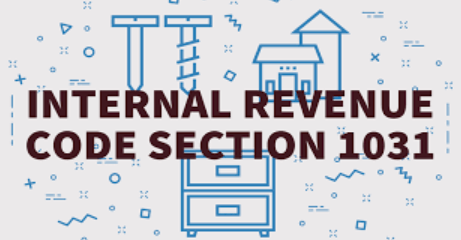Smart Swaps: Understanding and Implementing Section 1031 Exchanges in Real Estate Deals

Real estate transactions often involve complex tax implications, but savvy investors leverage legal provisions like Section 1031 to optimize their portfolios. In this article, we explore the intricacies of Section 1031 exchanges, shedding light on its mechanics, benefits, and the crucial role of specialists in navigating this tax strategy effectively.
What is Section 1031?
Section 1031 of the Internal Revenue Code provides a powerful tool for deferring capital gains taxes on the exchange of like-kind properties. This section enables investors to reinvest the proceeds from the sale of a property into a similar one, deferring the tax liability until a future date.
How Does Section 1031 Work?
When property owners sell an asset, they can defer capital gains tax by reinvesting the proceeds in a property of equal or more excellent value. This exchange must adhere to specific rules, such as completing the exchange within a set timeframe and using a qualified intermediary to facilitate the transaction.
Benefits and Risks of Section 1031 Exchanges
Benefits
- Tax Deferral: The primary advantage is postponing capital gains tax, providing investors with more capital for immediate reinvestment.
- Portfolio Diversification: Section 1031 facilitates the exchange of properties, allowing investors to strategically diversify their real estate holdings.
Risks
- Stringent Rules: Failure to comply with Section 1031 regulations may result in disqualification and immediate tax consequences.
- Market Fluctuations: Economic uncertainties can impact property values, potentially affecting the success of an exchange.
The Role of Specialists in Section 1031 Exchanges
Engaging specialists is standard practice for navigating the complexities of Section 1031 exchanges. These professionals possess in-depth knowledge of tax laws, real estate markets, and the intricacies of the exchange process. Their expertise ensures transactions meet all regulatory requirements.
Standards and Compliance in Section 1031 Exchanges
To maintain the tax-deferred status, exchanges must adhere to specific 1031 standards:
- Like-Kind Requirement: Properties involved in the exchange must be like kind, broadening the scope to various real estate types.
- Identification Period: Investors have 45 days to identify potential replacement properties.
- Exchange Period: The exchange must be completed within 180 days from the sale of the original property.
Implementing Section 1031: A Step-by-Step Guide
- Engage a Qualified Intermediary: A specialist-standard practice, qualified intermediaries facilitate the exchange, holding funds during the process.
- Identify Replacement Properties: Investors must identify potential replacement properties within 45 days, adhering to specific identification rules.
- Complete the Exchange: The actual exchange, executed with the assistance of the qualified intermediary, must be finalized within 180 days of the original sale.
Navigating Tax Implications
While Section 1031 provides significant tax benefits, investors must be aware of related tax implications, including depreciation recapture and potential changes in tax laws.
Maximizing the Potential: Strategies for Section 1031
Experienced investors leverage various strategies, such as consolidating properties, upgrading to higher-value assets, or diversifying across different geographic locations to maximize the benefits of Section 1031.
Read also: Mastering Filmymeet: Tips and Tricks for Effortless Movie Streaming
Common Misconceptions about Section 1031
Addressing common misconceptions, such as the belief that Section 1031 applies only to particular property types, clarifies potential misunderstandings that might deter investors from utilizing this powerful tool.
Conclusion: Optimizing Returns through Section 1031 Exchanges
In conclusion, the strategic implementation of Section 1031 exchanges, or “smart swaps,” presents a compelling opportunity for real estate investors to maximize their profits. Investors can build and expand their portfolios by deferring capital gains taxes, increasing cash flow, and leveraging gains for more significant investments. It is imperative to emphasize the importance of meticulous planning and seeking guidance from specialists to successfully navigate the complexities of Section 1031 exchanges. This proactive approach ensures compliance with IRS regulations and unlocks the full potential of this powerful tax-deferral strategy.
FAQs: Navigating Common Queries on Section 1031 Exchanges
Q1: Can any property be exchanged under Section 1031?
A: Section 1031 exchanges are generally limited to real property used for business or investment purposes. Consult specialist standards to assess eligibility.
Q2: What is the timeframe for completing a Section 1031 exchange?
A: Investors have 45 days to identify replacement properties and 180 days to finalize the exchange. Timely execution is crucial for a successful transaction.
Q3: How does a specialist assist in a Section 1031 exchange?
A: Specialists-standard provide expertise in property valuation, identification, and compliance with IRS regulations, ensuring a seamless and compliant exchange process.
Q4: Are there any restrictions on the value of properties involved in a Section 1031 exchange?
A: While there is no strict value limit, specialists can help manage the complexities of high-value transactions and ensure compliance with IRS guidelines.

